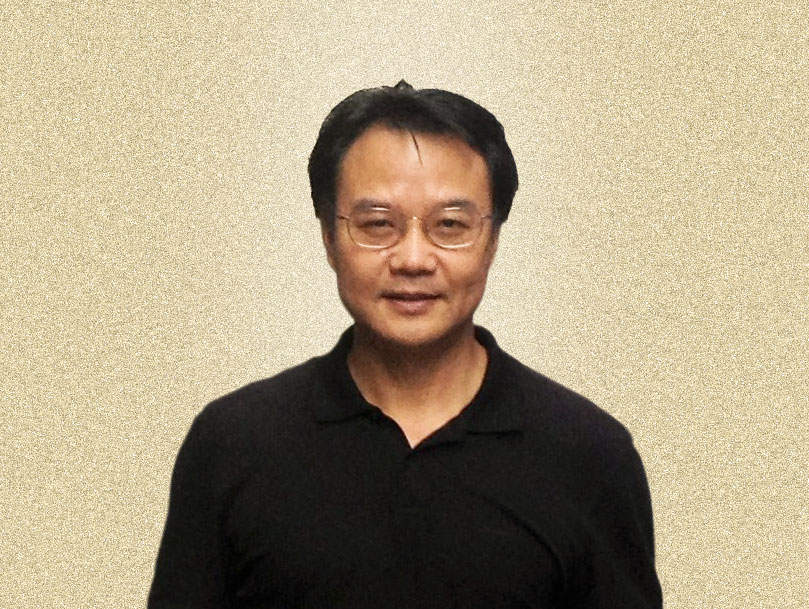人物簡介
俞曉峰博士於1995年畢業於軍事醫學科學院獲得博士學位,2000年赴美國任耶魯大學醫學院研究員,2003-2009期間任職於iTL基因打靶公司,作為資深科學家和項目經理負責參與了基因工程小鼠模型研發方案與策略的設計、項目的管理、技術人員的指導與培訓、以及客戶服務與技術諮詢等工作,2007年起負責開發了人源化p53基因不同點突變的腫瘤小鼠模型庫項目。2009-2010任紐約大學醫學院研究員。2010-2013年,任職於美國Applied StemCell公司,並在中國子公司斯坦福生物科技擔任副總裁一職。俞博士在遺傳工程小鼠領域有超過18年的開發與管理經驗,在幹細胞相關領域及哺乳動物細胞系基因改造研究也取得了巨大成就,其研究成果多次發表在Nature Immunology、Hum Mol Genet.、Mol Cell Biol.等高水平雜誌上。
俞博士於2013年加入賽業生物科技( Cyagen Biosciences)公司,主要負責轉基因鼠及基因敲除小鼠平台的技術工作。
研究領域
人物簡歷
2013.7-至今
任職於賽業(蘇州)公司,擔任技術總監、高級科學家。
2010-2013
任職於美國Applied StemCell公司,並在中國子公司斯坦福生物科技擔任副總裁一職。其建立的強有力轉基因技術及生產隊伍使轉基因小鼠服務成為ASC收入最高的技術服務。
2009-2010
任紐約大學醫學院研究員。
建立紐約大學醫學中心基因重組工程技術,獨立成功地開發了多種基因敲入模式鼠。
2003-2009
任職於iTL基因打靶公司,作為資深科學家和項目經理負責參與了基因工程小鼠模型研發方案與策略的設計,項目的管理,技術人員的指導與培訓,以及客戶服務與技術諮詢等工作。
2000年
任耶魯大學醫學院研究員,利用基因打靶技術進行小鼠FAT10和LST1基因的功能研究以及人類LST1基因啟動子的特徵和調節機制研究。創建了人類LST1/GFP基因表達載體並開發了用於體外細胞功能研究的能穩定表達LST1/GFP基因的HeLa細胞系。
學術論著
1.Bryan King1–3,8, Francesco Boccalatte1,2,8, Kelly Moran-Crusio1,2,4, Elmar Wolf5, Jingjing Wang1,2, Clarisse Kayembe1,2, Charalampos Lazaris1,2,6, Xiaofeng Yu1,2, Beatriz Aranda-Orgilles1,2, Anna Lasorella7 & Iannis Aifantis1,2 The ubiquitin ligase Huwe 1 regulates the maintenance and lymphoid commitment of hematopoietic stem cells. Nat Immunol.2016 Nov;17(11):1312-1321.
2. Market CD, Meaney MP, Voelker KA, Grange RW, Dalley HW, Cann JK, Ahmed M, Bishwokarma B, Walker SJ, Yu SX, Brown M, Lawlor MW, Beggs AH, Childers MK.Functional muscle analysis of the Tcap knockout mouse. (2010) Hum. Mol. Genet. 19(11):2268-83.
3. Yu XF, He W, Tseng K, Oge R, Lovos, Fantal B, Ji Y, Rung C, Chen E, Aronov L, Weng W. A new resource to provide a full spectrum of human p53 point mutations in humanized mouse models (oral presentation). (2008)14 International p53 Workshop. October 27-31, Shanghai,
4. Yu XF, Canaan A,, Booth CJ, Lian J, Lazar I, Gamfi SL, Castille K, Kohya N, Nakayama Y, Liu YC, Eynon E, Flavell R, Weissman MS. FAT10/Diubiquitin-like protein-deficient mice exhibit minimal phenotypic differences.(2006) Mol. Cell. Biol. 26(13): 5180-9.
5. Yuan B, Hou XJ, Wang H, He J, Yu XF, Liu HT, Huang C. Affinity mature of human anti-TNF-a Fab through constructing a light chain second library. (2001) J. Cell. Mol. Immunol. 17(2):179-81.
6. Yu XF, Weissman MS. Characterization of the promoter of human LST1: a gene with a complex pattern of alternative transcripts. (2000) J. Biol. Chem. 275(44): 34597-24608.
7. Yu XF, Weissman, SM. Disruption of the mouse FAT10 gene by gene targeting in the mouse embryonic stem cells (poster). (2000)International Congress on Differentiation and Cell Biolog. Sept. 24-28, Gold Cost, Queensland, Australia.
8. Yuan B, He J, Yu XF, Liu HT, Zhou YS, Wang H, Huang C. The gene sequencing and analysis of anti-TNFa human monoclonal antibodies. (2000) Letters in Biotechnology, 11(1): 5-8.
9. Raghunathan A, Chen YH, Sivakamaundari R, Yu XF, Ranjana P, Weissman SM. LST1/B144 a MHC encoded protein induces dendritic cell-like morphology in cells(poster). (1999)20 Annual Genetics Retreat, Jun. 4-6, Newport, RI, USA.
10. Yuan B, He J, Zhou YS, Liu HT, Yu XF, Wang H, Huang C. High affinity anti-TNFa human monoclonal antibodies directly selected from pooled phage display library. (1999) Letters in Biotechnology, 10(4): 258-62.
11. Liu HT, Huang C, He J, Yu XF, Yuan B, Yong D, Wang HT. Purification of bacterially expressed heavy chain variable region of human anti-idiotypic antibody against antibody of LPS of Shigella sonnei using metal chelate chromatography. (1998) J. Cell. Mol. Immunol., 14(2):123-5.
12. Chen W, Huang C, Wang HT, Fu L, Yu XF, XuJ, Du GX. cDNA cloning and sequencing of the N-terminal gene of BPI from Chinese. (1997) Microbiology, 24(6):350-3.

